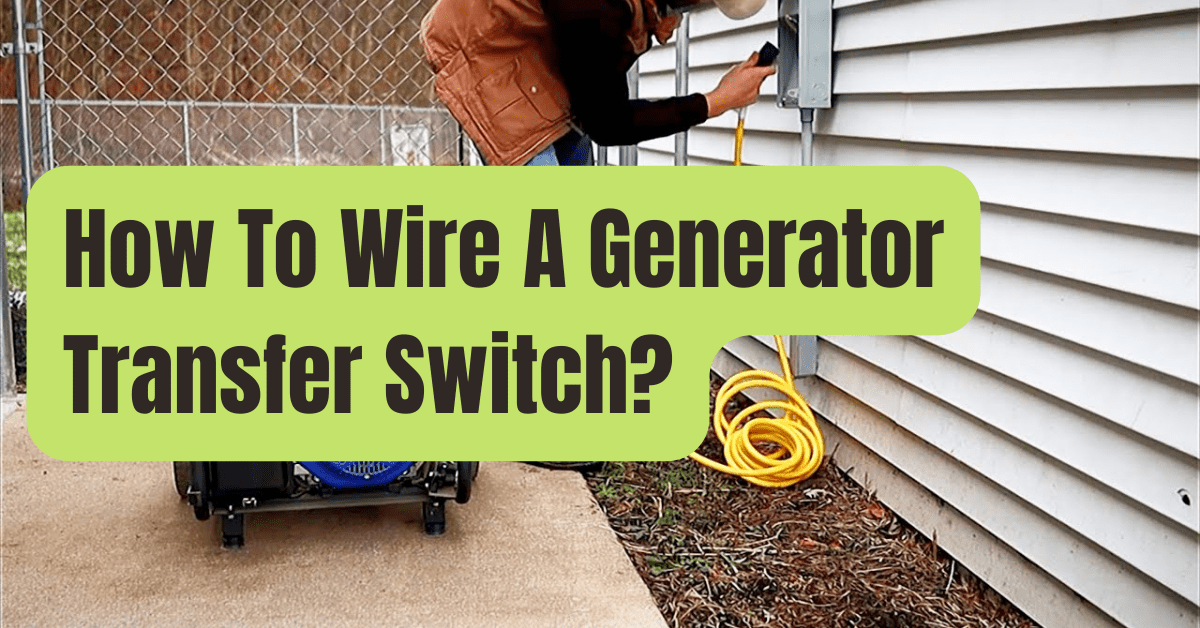Installation Of A Manual Transfer Switch
During a power outage, a manual transfer switch is placed adjacent to the main service panel to replace the conventional electrical supply with power from a backup generator.
Automatic transfer switches detect the loss of power, start the backup generator, and switch over to the backup power supply, while manual transfer switches need an operator to change the power source.
In 16 stages, learn how to setup a manual transfer switch for a backup system.
Because the quantity of energy generated by a backup generator is insufficient to power all of your home’s electrical circuits, you’ll need to designate a few circuits for backup current.
However, Choose Backup Circuits First:)
Determine which loads you’ll want to power from your backup generator in the case of a power outage before you buy one.
You should generally power your refrigerator, freezer, and perhaps a few lights.
To figure out how big your backup generator should be, add up the operating wattage ratings of the appliances you’ll be using.
Because many appliances’ startup wattage is larger than their operating wattage, avoid turning on all circuits at the same time to prevent overloading your generator.
Here are some rough operating wattage recommendations (for estimating electrical loads, use this MS Excel Spreadsheet):
- Refrigerator: 750 watts
- Forced air furnace: 1,100 to 1,500 watts
- Incandescent lights: 60 watts per bulb (CFA and LED lights use less wattage)
- Sump pump: 800 to 1,000 watts
- Garage door opener: 550 to 1,100 watts
- Television: 300 watts
Multiply the total of the wattage values of all the loads you wish to power by 1.25. This will tell you how much power your generator needs to generate. Typically, portable backup generators have a power output of 5,000 to 7,500 watts.
The majority of bigger, stationary generators can provide 10,000 to 20,000 watts of power (10 to 20 kilowatts).
Let’s go through 14 steps for setting up a manual transfer switch:
Step 1
Your electrical service panel’s primary power breaker should be turned off.
WARNING: The primary breakers’ terminals where electricity enters will remain electrified.
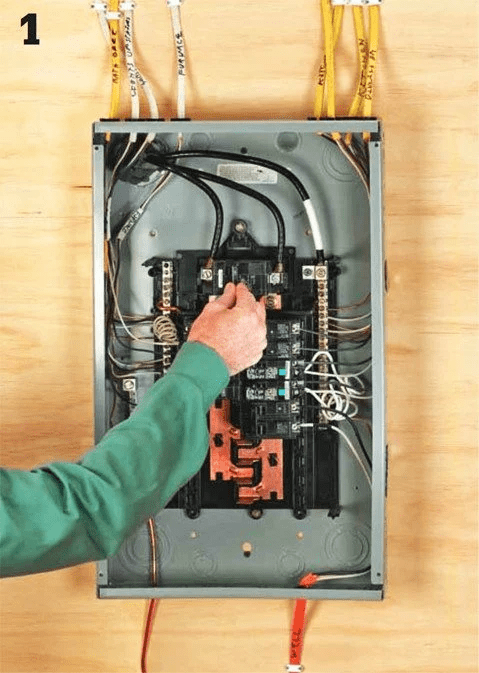
Step 2
Determine which circuits in your home are essential for emergency use in the event of a power loss.
The refrigerator, freezer, furnace, and at least one light or small appliance circuit are usually included.
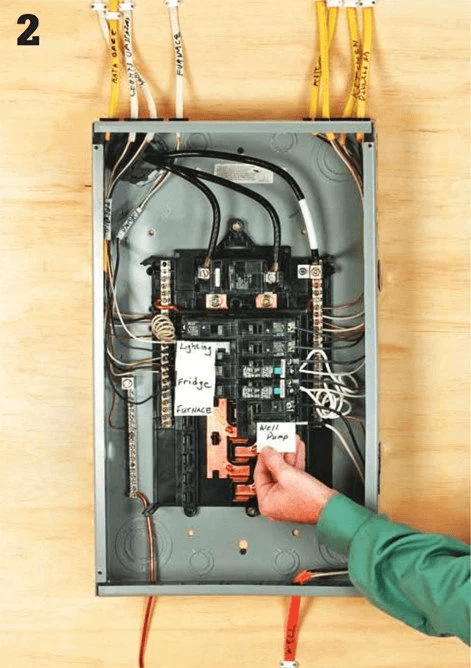
Step 3
Match the circuit inlet on your pre-wired transfer switch to your key circuits.
In the transfer switch, try to balance the load as much as possible: Connect your freezer to the circuit furthest to the right if your refrigerator is on the leftmost switch circuit.
Two 120-volt circuit connections are required for double-pole (240-volt) circuits.
Also, make sure that the 15-amp and 20-amp circuits are not incompatible.
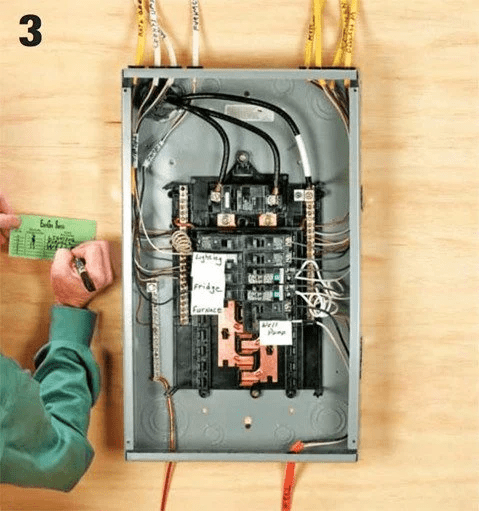
Step 4
Select and remove a knockout from the main service panel box’s bottom.
Make sure the cutout you pick is the right size for the connection on the flexible conduit coming from the transfer switch.
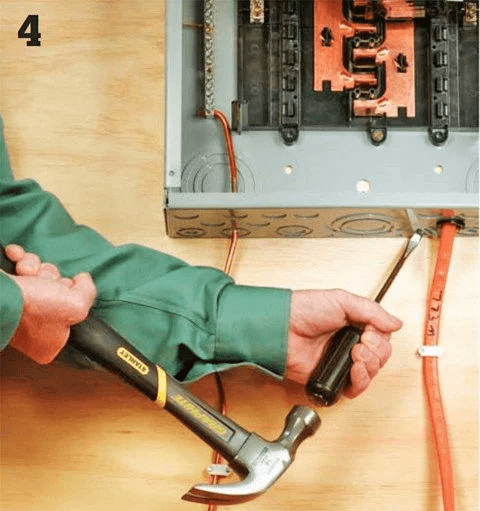
Step 5
Feed the transfer switch wires into the knockout hole, being careful not to damage the insulation.
You’ll see that each wire is labeled with the name of the circuit it feeds in the switch box.
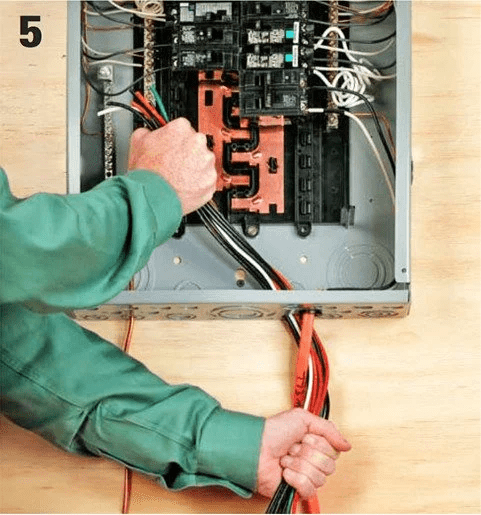
Step 6
Use a locknut and a bushing to secure the flexible conduit from the switch box to the main service panel.
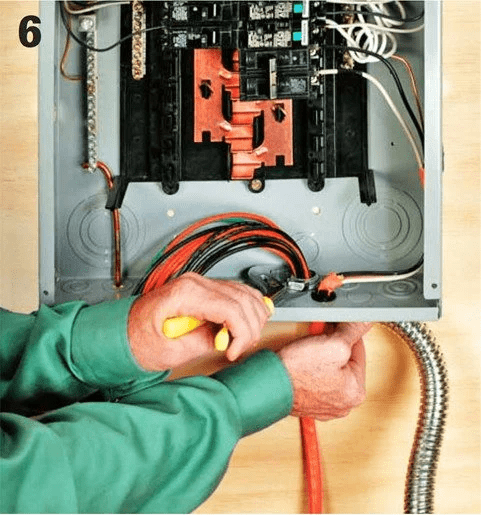
Step 7
Fix the transfer switch box to the wall such that the closest edge is approximately 18 inches from the main service panel’s center.
Use whichever connections make sense for the sort of wall you have.
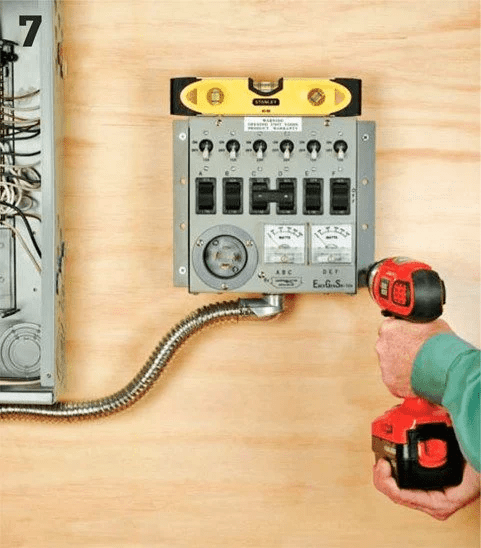
Step 8
Remove the first essential circuit’s breaker from the main service panel box and unhook the hot wire lead from the breaker’s lug.
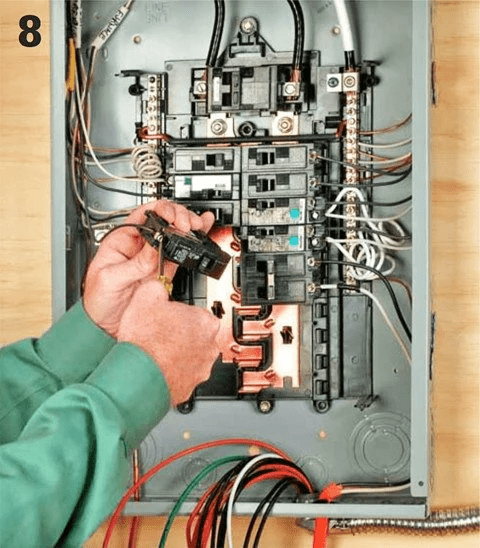
Step 9
Find the red wire for the circuit in the switch box that corresponds to the one you’ve disconnected.
Reinstall the breaker after connecting the red wire to the one you just removed.
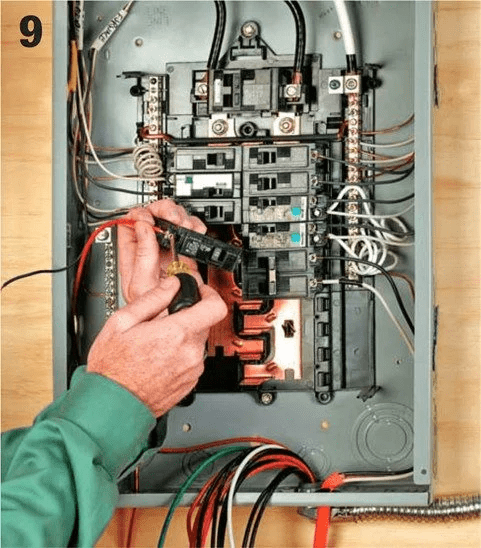
Step 10
Using a yellow wire connector, twist the black wire from the same transfer switch circuit together with the old feed wire.
At the box’s edges, gently tuck the cables out of the way.
Continue on to the next circuit and repeat the procedure.
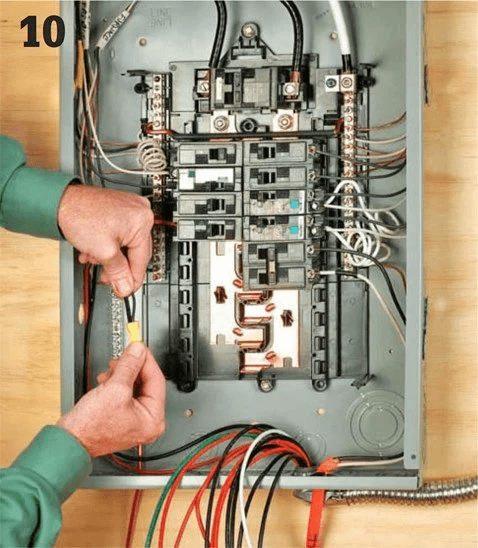
Step 11
Connect the red leads from the two transfer switch circuits to the double-pole breaker if any of your important circuits are 240-volt circuits.
The two circuits that originate in the transfer switch should be close to each other, with their switches linked by a handle tie.
Remove the preattached handle tie and utilize the circuits independently if you don’t have any 240-volt circuits.
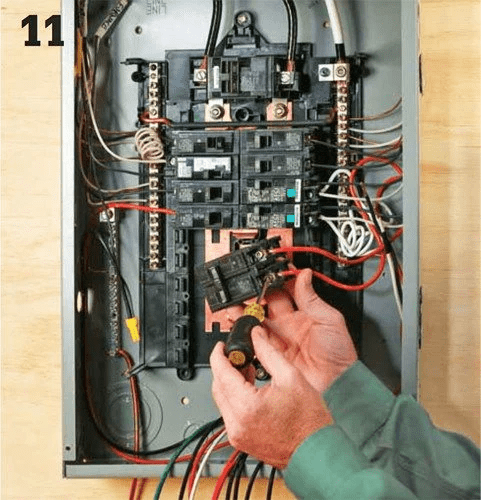
Step 12
Connect the white neutral wire from the transfer switch to an opening in the main service panel’s neutral bus bar after all circuit connections are complete.
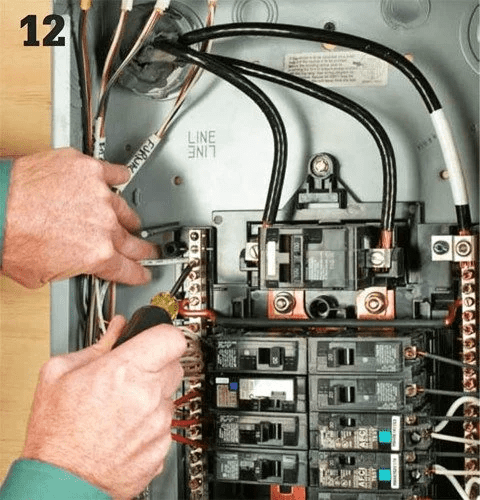
Step 13
Connect the transfer switch’s green ground wire to an open connector on the grounding bar in your main service panel.
The transfer switch installation should now be complete.
Replace the service panel box lid, and ensure sure the circuit map on your switch box is filled in.
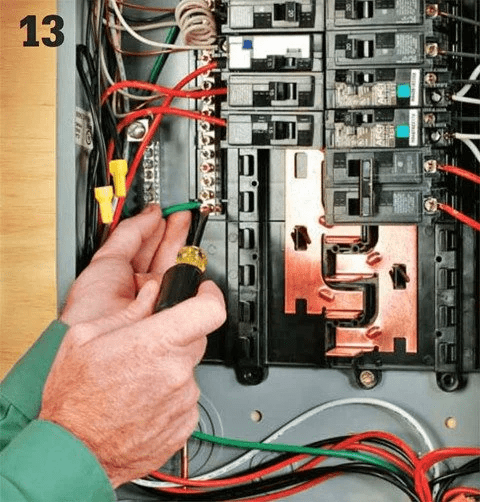
Step 14
To begin, make sure that all of the switches on the transfer switch are set to the LINE position.
The main panel breakers should still be turned off.
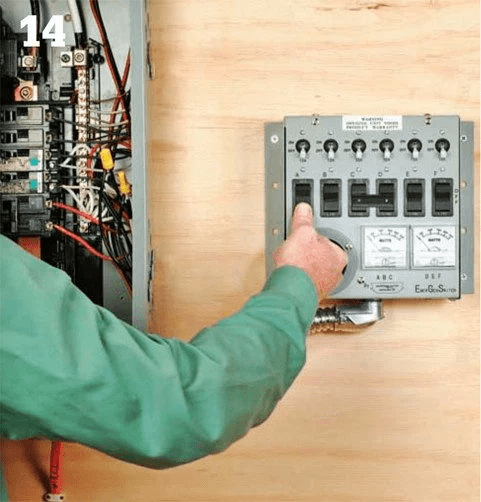
Ensure that your backup generator is in good working order and that it was professionally installed.
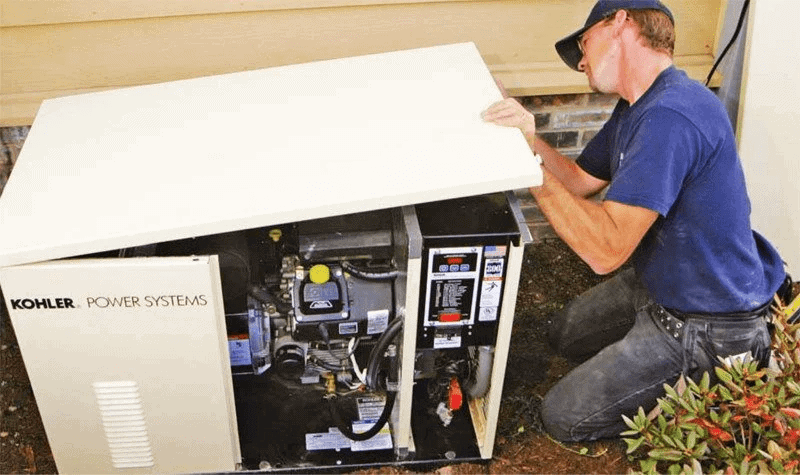
Step 15
Connect the power wire from the generator to the switch box before turning it on.
Never connect or disconnect a generator cable while it is operating.
Turn on your backup power generator and let it run for a few minutes.
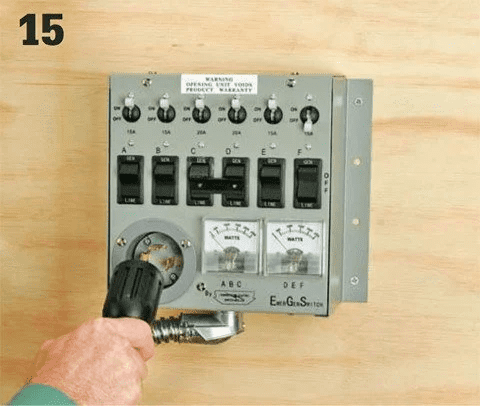
Step 16
One by one, turn each circuit switch on the transfer switch box to GEN.
By switching back and forth between circuits on the left and right sides, you can keep your equilibrium.
Turning on all circuits at the same time is not a good idea.
As you activate each circuit, keep an eye on the onboard wattage meters and attempt to maintain the wattage levels balanced.
Turn the switches back to LINE when you’ve finished testing the switch, and then turn off your generator.
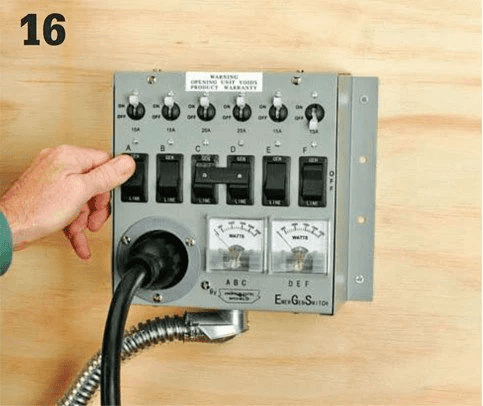
A Few Remarks on a Standard Backup System
Backup generators power a manual transfer switch, which disconnects the home from the main service wires and directs electricity from the generator to chosen household circuits.
Installing a backup generator is an excellent approach to protect your family in the event of an emergency.
A portable gas-powered generator and a couple of extension cords are the most basic backup power systems.
When it’s not conducting emergency backup duty, this solution has the added advantage of allowing you to operate a refrigerator and a few worklights during a power outage with a tool that can also be hauled to distant job sites or on camping vacations.
This is also the most cost-effective method of providing backup power for your house.
A generator can be purchased at most home stores and installed in a couple of hours.
If you go this route, be sure that any loads that your generator is powering are isolated from the utility power supply.
For your portable generator, the next step is to add a manual transfer switch.
Your service panel is permanently hardwired with transfer switches.
Between the generator and the service panel, they are installed on the inside or outside of your home.
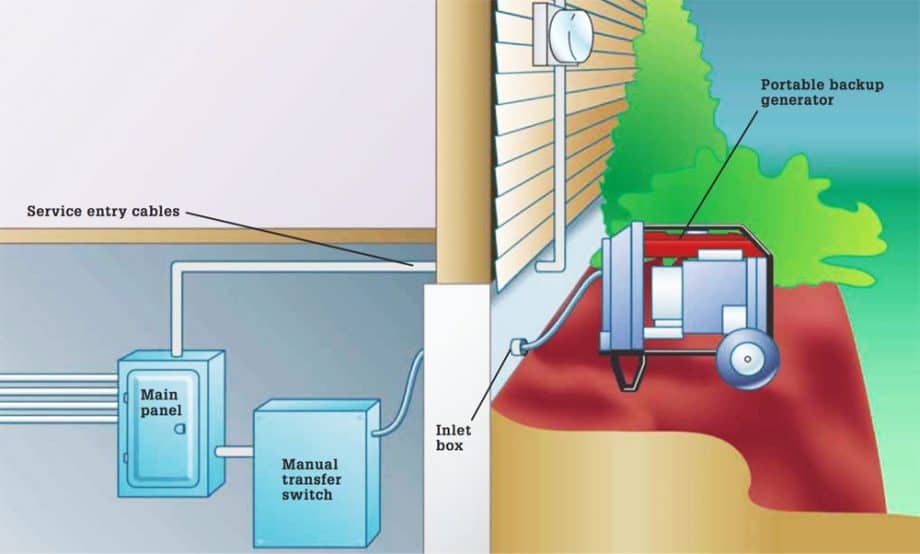
The switch receives a power supply from the generator.
The switch is connected to a few key circuits in your home, enabling you to power lights, furnace blowers, and other items that are difficult to reach with an extension cable.
The most crucial function of a transfer switch, however, is to disconnect the utility power.
When your generator comes in, “backfeed” of electricity from your generator to the utility line may occur if the dormant utility power line is connected to the service panel.
Line workers attempting to restore electricity may perish as a result of this circumstance.
Many towns require that only a certified electrician install a transfer switch because of the risk of backfeed.
Using a transfer switch that has not been professionally installed may invalidate the switch’s and generator’s warranties.
When automatic transfer switches detect a large decrease in line voltage, they turn on the generator and cut off the utility supply.
They may be used with portable generators, as long as the generator has an electric starter.
The top of the line in backup power supply systems are large standby generators that look like central air conditioners.
Standby generators are available in quantities ranging from 20 to 40 kilowatts of output – enough to cover all of the power demands of a 5,000-square-foot house.
They are often powered by home natural gas lines or propane tanks that provide an endless fuel supply.
Choosing the Right Generator
A few considerations are required when selecting a generator for your home’s requirements.
The table below estimates the size of generator that is normally suggested for a home of a certain size.
Add up the power consumption (watts) of all the circuits or devices that will be powered by a generator to obtain a more precise figure.
It’s also crucial to remember that the amount of power needed when you turn on most electrical equipment is more than the number of watts necessary to keep the gadget functioning.
For example, an air conditioner that runs on 15,000 watts of electricity would need a 30,000-watt surge during starting (the power range required to operate an appliance is usually listed somewhere on the device itself).
The terms “run watts” and “surge watts” refer to these two quantities.
Typically, generators are offered in terms of run watts (a 5,000-watt generator can sustain 5,000 watts).
They’re also rated for a certain amount of surge wattage (a 5,000-watt generator may be able to produce a surge of 10,000 watts).
If the surge watts aren’t stated, contact the manufacturer or consult the handbook.
Some generators can’t create much more surge wattage than they can run wattage, while others can produce twice as much surge wattage as they can run wattage.
| Size of house (in square feet) | Recommended generator size (in kilowatts) |
| Up to 2700 | 5 -11 |
| 2071 – 3700 | 14 – 16 |
| 3701 – 4700 | 20 |
| 4701 – 7000 | 42 – 47 |
It’s not essential to purchase a generator that matches the surge potential of all your circuits (you won’t be turning everything on at the same time), but surge watts should be considered.
It’s also a good idea to stagger appliance starts if you’ll be running the generator at or near full capacity.

